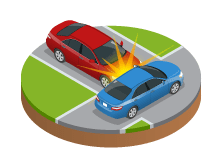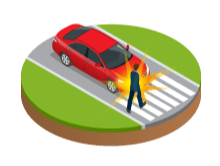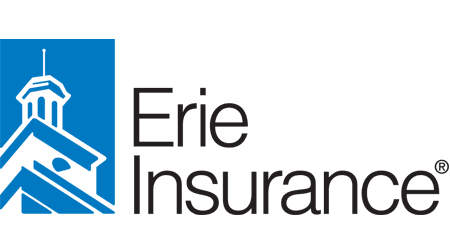Get the cheapest quotes for your car
Compare providers in your area.
Your information is secure
Compare providers in your area.
Your information is secure
Washington, DC’s average annual car insurance cost is $1,574.09 per year or about $131 per month, according to data from the National Association of Insurance Commissioners (NAIC). This makes DC 32% more expensive than the national average rate, which stands at $1,190 per year.
The NAIC’s auto insurance data considers both state minimum car insurance policies as well as those with extras like collision coverage. Because car insurance costs depend on many factors about you, your car and your location, your rates may come in higher or lower than DC’s average.

In areas with choice no-fault laws, drivers choose whether fault applies to injury-related expenses.
Washington, DC requires every driver to carry basic liability coverage which protects other drivers in an accident. You may see the amount of liability coverage required written as 25/50/10. These amounts are called the coverage limits, and they tell you the maximum amount that your insurance will pay for damage.
In DC, you’re also required to carry uninsured motorist coverage, which protects you against uninsured or underinsured drivers. Let’s break down what’s covered by DC’s minimum coverage requirements.

Washington, DC requires at least 25/50 for bodily injury liability, which pays up to $25,000 for injuries to one person and up to $50,000 total if you injure more than one person in the same accident. These limits are a common requirement across other states.
That said, consider higher liability limits to avoid paying for someone else’s medical bills or pain and suffering out of pocket. Bodily injury coverage applies to other drivers, passengers or pedestrians if you cause the accident.

In DC, you also need $10,000 for property damage liability at least, which pays for damage to the other driver’s car or personal property like a smartphone or property owner’s fencing. This limit is a low level of coverage, so think about choosing higher limits to help you repair or replace someone else’s car or property.

Washington, DC also requires you to carry uninsured or underinsured motorist coverage, which pays for your car damage or medical bills if you get hit by a driver with little to no insurance. The coverage also applies to hit-and-run accidents.
The coverage pays up to $25,000 for injuries to one person or $50,000 if multiple people get injured, such as you and your passengers. For car or personal property damage, you’ll pay a $200 deductible before your insurance shoulders up to $5,000 worth of damage.
Washington, DC might keep similar requirements to many states, but its minimums won’t offer enough protection in moderate or serious car accidents. For example, if your car gets totaled by an uninsured driver, your insurance would pay only $5,000 to replace it. That amount won’t cover the full price of buying a new car.
Think about raising your coverage limits and adding optional coverage, depending on your budget.
Washington, DC keeps a choice no-fault law for car insurance, which means that you choose between traditional tort liability or no-fault laws, according to the legal website Nolo.
If you choose tort liability, you can sue other drivers for pain and suffering with no limitations. If you choose no-fault coverage, you’ll file injury claims under your personal injury protection unless you suffer a serious injury.
However, DC’s no-fault laws don’t apply to property damage like car repairs. Your insurance company and legal authorities will determine who’s at fault for this damage. For property damage, the District considers whether both drivers are partially at fault under its contributory fault law, according to Nolo. This law won’t let you receive any payment from the other driver if you’re found partially at fault.
For instance, if the other driver is 95% at fault and you’re 5% at fault, you won’t get reimbursed for your damages by the other driver. Instead, you’d file under your own collision or personal injury protection if you bought these optional types of coverage.
D.C. drivers don’t have the luxury of low car insurance costs across the district. However, getting quotes from multiple companies could save you big time.
We vetted a variety of companies and chose our top picks for coverage, perks and discounts. We also checked out ratings from J.D. Power, Better Business Bureau, AM Best and the National Association of Insurance Commissioners.

State Farm
Finder score
You'll see nearly 5 stars out of 5 in app stores for the company's main app. It also offers optional coverage like gap, rideshare and accident forgiveness that you won't find everywhere. Plus, if you join its Drive Safe and Save program and track your driving, you could save up to a third off your insurance bill.
| Telematics | Drive Safe and Save |
|---|---|
| Gap insurance | No |
| Telematics | Drive Safe and Save |
|---|---|
| Gap insurance | No |
Geico
Finder score
GEICO also offers user-friendly online tools, including its app that gets nearly 5-star ratings from millions of customers. The app lets you access your insurance card, submit a claim with photos, learn when your car maintenance is due and more.
| Telematics | DriveEasy |
|---|---|
| Gap insurance | No |
| Telematics | DriveEasy |
|---|---|
| Gap insurance | No |
Allstate
Finder score
By choosing Allstate, you're also getting a reputable brand with strong finances and nearly 100 years of industry experience. Allstate is the fourth-largest car insurance company in the US, showing that customers trust this brand.
| Telematics | Drivewise |
|---|---|
| Gap insurance | Yes |
| Telematics | Drivewise |
|---|---|
| Gap insurance | Yes |

Erie
Finder score
You also won't fall short of perks by choosing Erie. Once you sign up, you won't see your rates change unless you update vehicles, drivers or your address. You also can get accident forgiveness, diminishing deductibles, better car replacement or ridesharing coverage. These options aren't available everywhere.
Factors are characteristics specific to you that car insurance companies use to set how much you’ll pay for car insurance. The less risky each of your factors is, the less you pay. And the riskier you are, the more you’ll pay. We’ll break down rating factors in Washington, DC to keep in mind.
| Factor | How it affects your rates |
|---|---|
Age | How old you are is a top factor in determining your car insurance rates. With each passing year, you earn more experience on the road. More experience can equal cheaper rates. Teen drivers pay the most, but rates begin to level off around your 20s with drivers over 50 paying the least. |
Gender | Washington, DC takes gender into account when determining your rates. On average, men in Washington, DC pay less for car insurance than women. The average annual premium across all age categories for men is $1,463 while women pay an average of $1,487. |
Location | Where you live affects your rates, including where you park your car. High theft rates, high traffic and a high number of uninsured drivers could mean higher rates. When it comes to vehicle theft, Washington, DC comes in second-highest in the country. For every 100,000 inhabitants, approximately 476.8 vehicles were stolen, according to Statista. The national average across the US is 246 cars for every 100,000 inhabitants. As for uninsured drivers, 19.1% of Washingtonians on the road are uninsured. That ranks the state 9th out of 50 states for uninsured drivers, according to Insurance Information Institute. |
Driving Record | The better your record, the lower your premium. If you’re in an at-fault accident you could see rates increases from 20% to 50%. A DUI in Washington, DC can increase your rate by an average of 72%. These types of violations typically stay on your record for about five years. Washington, DC drivers with a clean driving record pay approximately $1,463 annually while Washington, DC drivers with one speeding violation pay approximately $2,085 annually. |
Vehicle and mileage | Your car’s make, model and trim directly affect how much you’ll pay for car insurance. Things like its cost, safety ratings, the likelihood of theft and sportiness all help insurers determine its cost to insure. Safer and cheaper vehicles score the lowest rates, with luxury vehicles with higher repair costs resulting in higher premiums. And, the more you’re on the road, the more at-risk you are to get in an accident, which means higher premiums. According to the Bureau of Transportation, Washingtonians drive around 19.4 miles per day, which is nearly half the national average of 36.1 miles per day. |
Credit score | Your credit score is included in your credit-based insurance score which insurers use to help calculate rates. According to the Insurance Information Institute, there is a strong correlation between your insurance score and claims filings. A good credit-based insurance score could mean lower rates. Washington, DC insurers charge the highest coverage rates for drivers with poor credit histories. Drivers with good credit scores could see an annual insurance rate of about $1,535. These rates rise to about $2,545 with a fair credit score and approximately $3,213 for those with poor credit. |
Coverage | The more coverage you get and the higher limits you choose, the more protection you’ll have and the more you’ll pay in monthly premiums. If you opt for full coverage car insurance that includes comprehensive and collision, the amount of your deductible weighs into your costs too. Higher deductibles mean lower monthly premiums. Low coverage costs in Washington, DC average to about $623 yearly, whereas high coverage can be anywhere around $1,537 on average. |
The purpose of car insurance is to help you recover financially after an accident. While Washington, DC’s required coverage is a starting point, you need extra protection to cover different kinds of damage. Coverage you may need:
Since DC requires low limits of 25/50/10 for liability coverage, think about upping those limits. The higher limits make sure that your insurance pays for all damage that you cause, including if someone takes you to court.
Talk over the limits that make sense for you with your insurance agent or financial advisor.
For accidents where you’re at fault, liability coverage won’t pay for your car’s damage — it pays for damage to someone else’s property. Instead, you’d need collision coverage to pay for your car damage. Collision coverage is optional, so you have to choose it for your policy.
Consider collision coverage if . . .
Since DC drivers experience theft nearly twice as much as in other states, you may want comprehensive coverage. This optional coverage helps you recover from damages like theft, vandalism, windshield cracks or weather damage.
Consider this coverage if . . .
While optional in DC, think about adding personal injury protection to help if you or your passengers get injured. PIP kicks in no matter who’s at fault in the accident. It pays for your or your passengers’ medical bills, lost income or home services during your recovery.
Consider this coverage if . . .
See the top insurers by market share nationally that serve in Washington, DC, according to S&P Global. To help you decide on the right company for you, we list each company’s ratings from top rating agencies, including:
| Provider | BBB Rating | JD Power Rating | NAIC complaint ratio | National market share % | Finder score | Go to site |
|---|---|---|---|---|---|---|
Progressive | A+ | 830/1000 | 1.05 | 13.3 | ★★★★★ 4/5 | Get Quotes |
USAA | A+ | 884/1000 | 1.9 | 6.3 | ★★★★★ 4/5 | |
Liberty Mutual | A+ | 827/1000 | 2.2 | 4.7 | ★★★★★ 4/5 | Get Quotes |
Erie | A+ | 856/1000 | 1.11 | 1.4 | ★★★★★ 4/5 | |
CSAA Insurance Exchange | A- | 816/1000 | 0.91 | 1.1 | ★★★★★ 4/5 | |
Amica | A+ | 867/1000 | 1.96 | 0.5 | ★★★★★ 4/5 | |
The Hanover | A+ | 812/1000 | 1.09 | 0.5 | ★★★★★ 3.5/5 |
| Company | Average annual rate | Learn more |
|---|---|---|
| Geico | $673 | Read review |
| USAA | $713 | Read review |
| State Farm | $936 | |
| Allstate | $1,074 | Read review |
| Progressive | $1,338 | Get a quote Read review |
| Erie | $1,419 | |
| The General |
Yes, you can get SR-22 insurance in Washington DC. You might need this kind of coverage if you’ve been convicted of a DUI, if you were caught driving without insurance or if you’ve accumulated too many violation points on your driving record.
Having an accident — regardless of who’s at fault or how serious it is — can be traumatic. Prepare by staying current with your protection. To get the cheapest coverage for your needs, carefully research your car insurance options when driving inside the Beltway.
A review of CashUSA, a loan connection service that may match you with lenders offering loans up to $10,000.
Explore different ways you could earn money playing games with GPT apps, Twitch streaming, esports competitions, and trading cards.
Compare highly rated and legit survey sites for your next side hustle, how to maximize your survey earnings, and how to avoid scams.
Learn how to become user tester, how much you can earn, top platforms for user testing, and how to avoid scams.
Learn how to earn money through trusted online surveys, including top platforms, practical tips, and some red flags to watch out for.
Earning extra cash can be as simple as sharing your thoughts. In this guide, we’ll walk you through some of the most trusted survey sites and show you how to get started right away.
Cash Advance loans by amount from $100 all the way up to $1,000 USD.
Bonds, treasury securities, blue chip stocks, ETFs, REITs, CDs and annuities are some of the best investments for retirees.
GoHenry is now Acorns Early. If you’re looking for a GoHenry alternative, try Greenlight, Step, Current, Modak Makers or Chase First.
Top apps like Self that build credit include Kikoff, Grow Credit, Chime Secured Credit Builder Card, Credit Strong and Cleo.